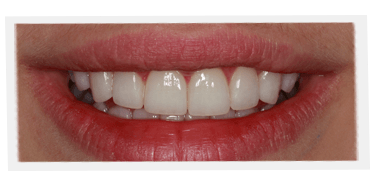
In the first part of this article, The Evolution of Dentistry – Part 1, we covered the history of dentistry before World War 2. Here, we cover the most recent changes in the industry and how technology changed drastically in helping us deliver great dentistry, and in particular, porcelain veneers, bridges, and dental implants. To learn more, check out my book, A Guide to the Perfect Smile, where I talk about getting the best dental treatments possible, whether it’s porcelain veneers, whitening, dental bridges, or implants. Happy reading!
“In the decade and a half following World War II, a lot of people did not have healthy teeth. They spent great deal of time in the dentist’s chair getting their teeth filled. By the time they were adults, many of them had almost as much metal in their mouths as teeth.”
In the late 1950s and early 1060s, the lexicon of dental treatment sounded like an armed forces manual. Terms like armamentarium, high-speed drills, high-volume evacuation, extension for prevention, and four-handed dentistry were common. The mouth was a combat zone as dentist waged an all-out war against cavities. If that was the ground war, the air was consisted of two campaigns. In the first one, cavity-preventing fluoride was added to community water supplies. By the 1060s, this meant that, for the first time ever, children had naturally good teeth – they didn’t require anywhere close to the number of fillings as the previous generation. In the second campaign, dental plan coverage was introduced, ensuring more regular visits by patients who were now less afraid of dental bills.
By the 1970s, dentistry was able to move from combat to peacekeeping. Prevention became the name of the game, as patients took advantage of new technologies. Increased insurance meant more regular check-ups – and topical fluoridation in toothpaste and after cleanings meant there were fewer problems. Besides fluoride, new dental procedures and technologies that were dominant in this period included periodontal therapy, pit and fissure sealants, and chlorhexidine rinses.
The, in the 1980s, came the greening of dentistry. Dentists moved out of peacekeeping and into recycling business. Patients who had sustained the crude, mechanical treatments of the 1950s and 1960s were forced by the deterioration or outdatedness of that work to return to their dentists for reconstructive treatments.
The generation that first benefited from prevention – let’s call them the Flower Power generation of the 1970s and on into the 1980s- needed less care but expected more than baseline dental health. They wanted dental beauty. Or at least their parents wanted it for them. Remember the number of kids during those times whose smiles were bristling with wire braces.
Enter the generation of the decades straddling the turn of the millennium. These patients, and their dentists, now had the desire, time, ability, and technology to focus on the next level of care: the smile.
And that is how the smile came to dentistry. Today, all patients are concerned about the effects on their teeth of aging: their teeth are wearing down, their gums are receding, and their teeth are discolored. Some are consulting dentists about their smiles in connection with the plastic surgery they are anticipating.”



